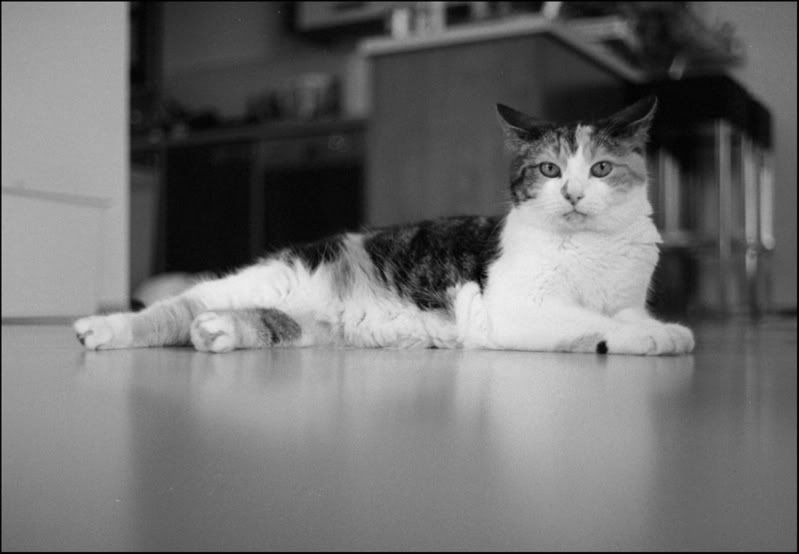I just have bought from Mike Goldberg some 20 films of Fomapan 200, which I will have to learn how to process.
Many years ago I did my free doctorate on Tri-X, by the method of David Vestal, which I will reproduce once again with Fomapan, since I am utmostly suspictious about Kodak.
David Vestal method, as far as I remember, starts with the axiomatic goal that good negatives show only at the time of printing, and that in order that you keep most of the printing options on your side, you should fine tune your processing so that they will easily print at contrast No 2 degree.
Then whe should find the best processing time for the ISO recommended by the manufacturer. A full roll will be taken of the same subject, carefully metered. From this roill we may cut a small piece and process by the manufacturer recommendations.
According to the results when printing at contrast No. 2, which will lead us to look either for more or less contrast, (more or less processing time) we will extract another small piece of the roll and process. And so for until WE find OUR best processing time, corresponding to our agitation customs, climate, music, etc.
The best subject to be photographed for that roll will be an image containing both a white shoe under direct sun, and a black shoe under shadow. Most of the chances are that when selecting the best print, i.e, the most easily printable print, at No 2 contrast, we will never have one with both detailed whites and detailed blacks. This is to be expected unless Fomapan surprises. But the closest one is the chosen one. And this difficulty is purposed.
Ok, thats' good for the first month of work, and for ISO 200. But for those among us eager to know more, we may be curious if Fomapan may surprise us at another ISO, or/and how it will behave at ISO 50, 100, 400, 800. Here we can either act out of general knowledge or acurate testing.
For acurate times, there is a simple method, but it will make this post too long - so at another oportunity. Or perhaps Roger will like to develope this issue.
Cheers,
Ruben



